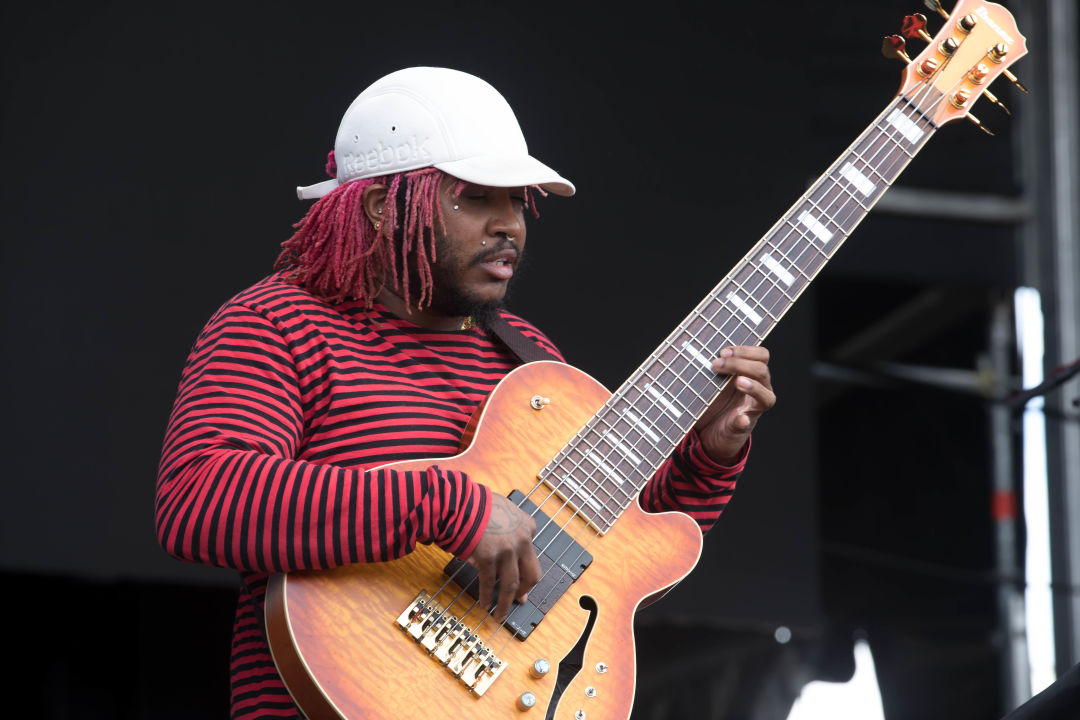Thundercat Was at Home Among Jazz Fans at His PDX Jazz Fest Set

Image: Courtesy Wikimedia Commons
I took my dad to the last Thundercat show I saw. It was an honest mistake.
Listen to Thundercat’s debut album The Golden Age of Apocalypse and you might form a picture of a man who plays brainy music for seated halls full of aficionados. But Thundercat is also right-hand man to Flying Lotus and Kendrick Lamar, icons to a younger generation and, in many cases, their gateway into jazz. So my dad had to suffer the indignity of having smoke blown in his face by guys a third his age. It was a party—something jazz shows haven’t tended to be for a long time now that rock, hip hop and EDM shows have supplanted their social-music niche.
I think my dad might’ve enjoyed Thundercat’s PDX Jazz Festival set at the Portland Art Museum a lot more. So, from the looks of things, did Thundercat. The bassist flashed a massive grin every time he tore into the wah-soaked solos he used to divide his songs on Saturday at the Portland Art Museum’s Kridel Ballroom. Popular wisdom says the audience always talks during the bass solo, but that was not happening here. The crowd was appreciative, and Thundercat basked in it.
Though the audience was younger than the one at the Blue Note documentary I attended that kicked off the festival, it was still a more buttoned-up crowd than when I’d seen him before. These people were there for jazz, not for Adult Swim bumper music. Maybe it’s also true that the bluehair crowd is more capable of affording the $56 entry fee—or more likely to plan ahead and buy tickets for this the show, which sold out a month in advance. But Thundercat seem relieved not to have to play his hits, and many perennials in his sets (“Heartbreaks/Setbacks,” “Oh Sheit It’s X”) were absent.
“This feels like home,” he quipped at one point in reference to a dancer in cat ears and leopard lingerie slithering across the stage. The crowd laughed in disbelief, until he revealed he was talking about spending time with his cat Turbo Tron, a great love for most of his career. He then played “Tron Song” from 2013’s Apocalypse, the first and best of several songs he’s written about his cat.
I’ve seen Thundercat four times now, and of his sets this was the best, though the atmosphere could be stifling. His band is small—himself, a keyboardist, and a drummer—and the solo sections in the middle of his songs can be samey. Sitting still and appreciating Thundercat is not always an advisable strategy for his shows. I wanted to pull out a blunt and start puffing, though given how surly security was and how swanky the environment was (carpets!), you’d expect someone to suplex you if you so much as cleaned the weed lint out of your pockets.
Thundercat is not an artist that’s difficult to see on the American stage. He’s a festival perennial, hops eagerly on bills for big tours (I saw him open for Earl Sweatshirt and Anderson .Paak), is 35 years old and full of stamina. But everyone who considers themselves a fan of live music should see Georgia Anne Muldrow, who opened for him on Saturday night, at some point in their lifetime. The L.A. musician is simply incredible. No reductive genre tag—funk, soul, R&B, jazz, hip hop, rock—encapsulates the breadth of her discography. She makes nothing less than vanguard music.
She stalked the stage in sunglasses and fringe, melting her songs into loose confederations of ideas, singing psychedelic poetry about the endless cycle of nature with the same fervor as when she sang a truly sweet duet with her husband, rapper Dudley Perkins. They flirtatiously moved towards and away from each other like two dancers in an old musical, and after Perkins finished his goofy verse on “These Are The Things I Really Like About You,” Muldrow let loose a purr so long it replaced her entire third verse. Now that’s the kind of cat noise I like to hear.




